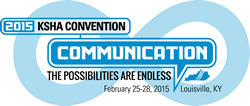Does NMES Improve Swallowing Function Following Stroke: A Critical Appraisal
Thursday, 5:15pm
Exhibit Hall 1AB
Poster 06
Post-stroke dysphagia is a common difficulty seen in stroke patients. Dysphagia is a serious complication, because it predisposes these patients to pulmonary infection and malnutrition (Xia et al, 2011, pg 73). The techniques used for intervention in patients with post-stroke dysphagia are crucial in preventing further swallowing complications as well as fostering improvement in the overall quality of life for this population.
Neuromuscular electrical stimulation (NMES) is a treatment that involves the placement of electrodes on the surface of the swallowing muscles. VitalStim therapy is a specific neuromuscular electrical stimulation that requires post-stroke dysphagia patients to perform a series of procedures including perception of swallowing action, followed by initial automatic swallowing, and then completely automatic swallowing (Li et al, 2014, pg 10). NMES is a treatment that has been used clinically for persons with dysphagia. Therefore, it is necessary to understand the best practice when applying this treatment to patients with post-stroke dysphagia.
This critically appraised topic determined that NMES was most effective in improving swallowing function in patients with post-stroke dysphagia when used in combination with traditional swallowing therapy.
Track:
Poster
